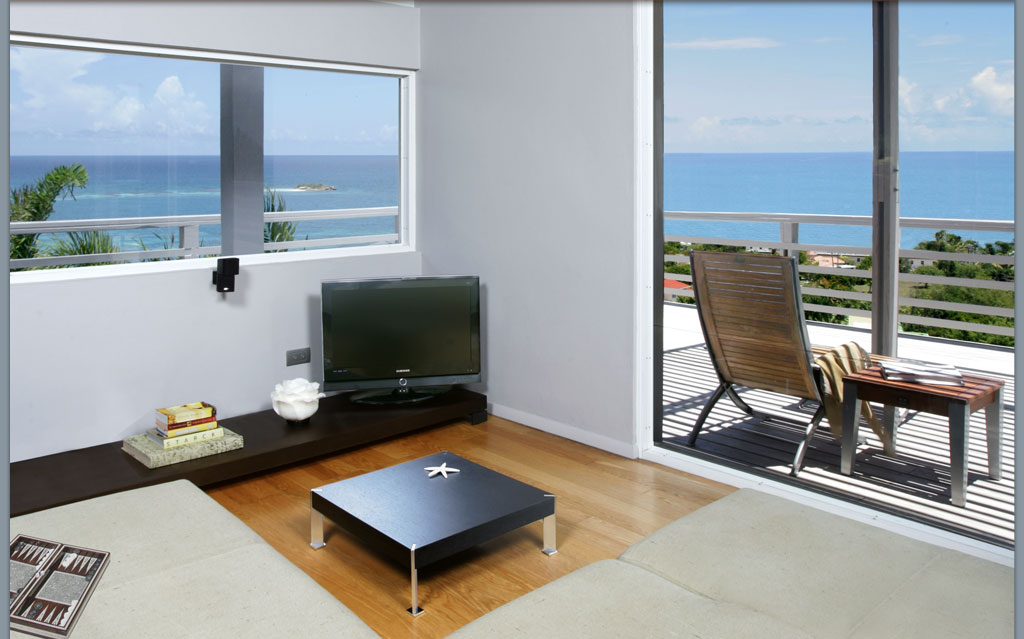






Antigua (an-TEE-guh), the largest of the Leeward Islands, is located in the Caribbean Sea about 30 miles south of its sister island, Barbuda.
Antigua's identity has gone through a roller coaster of changes and growth spurts. Discovered by Columbus in 1493, Antigua was the prime naval base for the British in the Caribbean for over a hundred years. Sugar cane put Antigua on the world commerce map up until the mid 1800s.
In recent years, Antigua has grown into one of the most popular tourist spots in the region by marketing perhaps its best natural resource: the beautiful beaches and coral reefs that line the coastline. A vacation in Antigua is a sun worshiper's paradise. The reef protects the island and provides calm swimming holes and a myriad of snorkeling and scuba sites. Other activities that can be enjoyed are deep-sea fishing, parasailing, wind surfing, horseback riding, bird watching, and probably that most popular Caribbean pastime, working on a golden tan.
The capital of Antigua is St. John, located on the northwestern side of the island. Those interested in the history of the area will want to visit the Museum of Antigua and Barbuda. This small but impressive museum displays artifacts from the pre-Columbian era right up to modern times. One particularly interesting exhibit is the collection of Stone Age Ciboney tools the first islanders used to survive. For a great view of the bay, stroll up the hill to the Cathedral of St. John the Divine. This stone church is actually the third church built on the site. The first two were both destroyed by earthquakes. The white Baroque architecture, with its beautiful twin spires, tower over the town, and offer a majestic first view for visitors. For some great duty-free shopping, stop in the ultra-modern Heritage Quay mall that sits on the pier.
The beaches on Antigua are legendary for their white sand, calm waters, and easy accessibility. The island's odd shape (the view from above has been compared to a Rorschach ink blot) provides literally hundreds of hidden nooks and crannies with tiny beaches and wading pools. There are a reported 365 beaches (maybe a slight exaggeration) on the island, so the decision as to which ones to visit may be a bit daunting! Dickenson Bay, located just north of St. John, is popular with families for its gently sloping white sand and calm waters. There are plenty of restaurants nearby, and watersport equipment can be rented at one of the kiosks. If you want some time away from the more populated beaches in the north, head south to magnificent Johnson's Point. This crescent shaped beach opens gradually into the Caribbean, and is loaded with rainbow colored tropical fish. On the southeastern coast, Half Moon Bay is a National Park and has been called the most beautiful beach on Antigua. This is also a great spot for a family outing. Out beyond the reef, windsurfing is one of the favorite area pastimes.
The waters off of Antigua are mostly calm, clear, and offer excellent visibility for both divers and snorkelers. The reef is so close to shore in some points that visitors can wade in and enjoy the underwater show. One of Antigua's best-known offshore sites, Cades Reef, is now partly contained in a designated underwater park. Another popular destination is the wreck of the Andes, a three mast merchant ship that sank in 1905 and now rests in less than thirty feet of water in Deep Bay.
Birdwatchers will want to take a day trip to Barbuda's Frigate Bird Sanctuary, which is located in the island's northwestern lagoon and is accessible only by boat. The sanctuary contains over 170 species of birds and is home to over 5,000 frigate birds.
If you want to see the remnants of the vast power of the British Navy, visit Nelson's Dockyard National Park, located in English Harbour on the southern tip of the island. Developed as a base for the British fleet, the harbor served as the headquarters for the Leeward Islands during the turbulent years of the late 18th century. Although the dockyard was greatly expanded at that time by Horatio Nelson, it was gradually abandoned in the nineteenth century and was closed in 1889. Today Nelson's Dockyard has been completely restored, and it is now the only Georgian dockyard in the world.
Antigua has reinvented itself and has grown into one of the most popular tourist areas in the Caribbean. The island is both historically rich and magnificently beautiful. Stroll along one of the many beaches and imagine the time when the British fleet sailed in and out of the harbor. Listen to some Calypso music while you sample the local cuisine. Put on some snorkeling gear and visit with the tropical fish that reside nearby. Take a horseback ride and watch the sunset.